The market for web applications is increasing each day. The demand for e-learning, booking, review, accounting, and other platforms is growing. So, the development of such niche applications can be a great idea.
Whether it is a website or a mobile application, the development of any software product starts from choosing a technology stack. And today, the Efisco team decided to share some insights on technology stack choice.
The technology stack: what is it?
The technology stack is a combination of technologies that are used to create a solution. These are various tools, frameworks, databases, and programming languages utilized to make the product. These can be divided into two primary categories:
- Client-side technologies or frontend
- Server-side technologies or backend
The Client-Side Development or Front-End Development
The frontend is the set of components the user can use to interact with the web application. These are the features visible to the user. The technologies used for front end creation:
HTML
HTML or Hypertext Markup Language is a standard markup language that is displayed in a web browser. It is the primary technology used to build any web application. It defines the meaning and structure of the web content.
CSS
Cascading style sheet or CSS allows the developer to modify the appearance and style of the HTML components in a browser. It allows the use of different colors and fonts their sizes and determines the position of some aspects on the page, making it more attractive and enhancing user experience.
JavaScript
JavaScript or JS is a number one programming language that is used for both the front end and backend. The primary use of JS in the front end is to create various dynamic features like animations. There are a lot of JavaScript frameworks allowing you to build dynamic web pages with ease.
It is also possible to build the front end using Ruby and .Net frameworks.
Server-side or backend development
The primary goal of the backend is to support all the frontend functionalities and build a communication between the user actions and various internal features. Server-side development might include programming, databases, and servers set up. Let us cover some aspects of these three.
Languages
PHP
PHP is a widely-used general-purpose scripting language that is used to create fast and flexible web applications. PHP allows database management, session-tracking, and dynamic content delivery that is essential for eCommerce websites.
It is open-source, case sensitive, and relatively simple. It is easy to integrate with XML, HTML, and JavaScript.
Python
Python’s popularity is growing each day since its simplicity and code readability allows various complicated things with ease. Python is widely used for web, desktop, and mobile development. It is open-source and easy to integrate.
Scala
Scala is a general propose programming language that allows building both web and desktop applications. The primary benefit of Scala is that it is easy to integrate with Java and run on JVM. As a result, it is a perfect solution for Java-powered web applications.
Ruby
Ruby is a general propose programming language that is also used for building web applications. In most cases, Ruby is used to building high-loaded websites since its ability to work on databases is fantastic.
Web Development Frameworks
Frameworks aim to simplify the development process and boost team productivity by providing programmers tools and pre-developed libraries to speed up their work. Here is the list of some most popular frameworks used for web development:
- Laravel
- CakePHP
- Ruby on Rails
- CodeIgniter
- VueJS
- MeteorJS
- Symfony
- NodeJS
Databases
The primary goal of a database is to collect and keep data organized and structured. When you are developing a web application, two types of databases are presented: relational and non-relational.
Here are the examples of both:
Relational:
- MySQL
- Microsoft SQL Server
- Oracle Database
- IBM DB2
Non-Relational:
- Redis
- MongoDB
- Cassandra
- DocumentDB
- HBase
- Coachbase
To Sum up
When you would like to enter the market with a new web software product, choosing the right technology stack is essential. You should consider the project size, delivery time, integrations, and the most importantly, your target audience.
And if you are looking for long-term development, it’s a good idea to create a team for that. To learn more about the dedicated team setup or outstaffing model, read our article.

